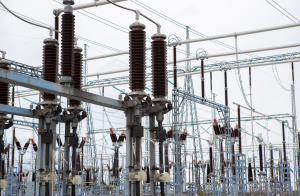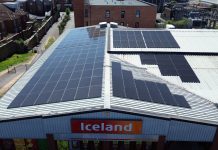
Electrification is surging throughout the UK, but grid capacity limits threaten to slow down the transition to net zero.
The simplest way for any business to reach net zero is to replace carbon intensive energy sources with clean, renewable electricity. But what can you do if you suddenly find out there is not enough capacity on your local electricity grid to provide you with more power? We asked Suzanna Lashford, from Vattenfall IDNO.
“It doesn’t matter what your business does, everyone needs more electricity to reach net zero. But, many businesses have taken the plunge, only to find their efforts thwarted by grid capacity constraints. Whether the power you need is for fleet of electric vehicles, electric heating or cooling, if you’re not generating your own clean, green electricity it must come through the grid.”
There are numerous potential roadblocks to getting more electricity to any site, they all start with the size of the business’ grid connection, from the local, low voltage (LV) network through to the high voltage (HV) distribution networks, which typically operate at 11, 33 or 132 kilovolts (kV). When you consider that much of the UKs electricity grid was built in the 1960s, and that the UK’s electrical demand is expected to double or even triple by 2050, our aging infrastructure is creating huge bottlenecks for companies net zero ambitions.
What can businesses do to secure the power they will need?
The first step is to understand your electrical power requirements and plan ahead. Lashford explains:
“Most businesses’ existing grid connection will not be sufficient to deliver the power for net zero operations and that means one of two things: Securing a new, second grid connection, or upgrading the existing connection to provide more power. Either option will place additional load on the local electrical grid, which is where capacity issues can arise.”
In an effort to improve transparency, and make the data more accessible, some DNOs like UK Power Networks and Scottish and Southern Electricity Networks now publish ‘heat maps’ showing the areas in which their grids are constrained. But for most businesses this is little help; relocating factories or other business operations is rarely a viable option. So, what can they do? Lashford again:
“If a business needs more power in an area with grid constraints they can apply to their local Distribution Network Operator (DNO) and they are legally obliged to quote for the required works within 45 days. But, if major grid upgrades are required, the price the DNO quotes can often be prohibitively expensive. As an Independent Distribution Network Operator (IDNO) we work closely with the DNOs, and can reserve grid capacity for free for our clients. So, if you know you will need more power in the future this can provide significant savings.
“We also build parts of the grid known as ‘contestable works’ (the parts of a network upgrade which don’t have to be managed by the DNO) and pay business owners or developers an ‘Asset Adoption Value’ payment for these, which is effectively ‘cash back’ that the DNOs cannot offer.”
The 14 DNOs that cover the UK have a double remit: maintaining and developing the grid to keep it running and providing new grid connections. Handling both of these requirements is complex challenge and, since keeping the grid running is so important, customers wanting new grid connections do not always receive the best service from their local DNO, which is why IDNOs were introduced.
“By partnering with an Independent Network Operator (IDNO) businesses get a power partner that is ‘on their side’ and has their interests at heart, whereas the DNOs are always balancing competing interests. We use a holistic approach to plan the most effective power upgrade strategy for a business and ensure that all existing on-site power is being utilised as efficiently as possible, so that our clients don’t over-pay for what they need. The DNOs don’t have the time or remit to work in the same way, they simply ask how much power you need and provide fixed quotes.”
Breaking the bottleneck
IDNOs were introduced to increase competition in the connections market, to help alleviate the stress on the DNOs and to improve customer service. SP Energy Networks (one of the 14 DNOs) commented in their ED2 Business plan: “We want to ensure IDNOs are able to complete increasing aspects of the connections process themselves. Empowering third parties with greater autonomy in this process will speed up the process and provide customer benefit.”
Vattenfall IDNO have established themselves in the UK to help support customers that would like to feed more power into the grid, from renewable energy systems, and customers that need more power, accelerating the development of the UK’s electrical distribution networks.
In a report from March 2022, the BEAMA (the UK trade association for manufacturers and providers of energy infrastructure technologies) stated that “the required investment in electricity distribution infrastructure is projected to total circa £330bn between 2020 and 2050. This implies an average investment of £11bn per year.”
IDNOs contribute to the costs of these network upgrades by investing their own funds to lay new cables, and build new substations, and will become increasingly important players in the transition to net zero by supporting the customer and helping to close the investment gap.
Vattenfall has approximately 1,000,000 business and household customers, over 132,000 km of electricity grids and invested more than £600 million in energy infrastructure in 2020 alone. As the largest owner and operator of regional electricity distribution grids in Sweden, which has been in business for more than 100 years, they have significant experience to draw on.
Some businesses, however, are still unsure about using IDNOs because the assume they will be more expensive. Lashford explains: “Ofgem regulates the amounts that IDNOs can charge customers via a ‘Relative Price Control’. This requires IDNO charges to be capped for all customers at a level consistent with the DNOs charges, so you can rest assured you’ll never be charged more by using an IDNO – in many cases we’re the cheaper option.”
With the electric revolution now in full swing, the backlog for new grid connections is increasing. Businesses which are serious about securing more power and meeting their carbon reduction targets would be wise to act now – and to speak with an IDNO – to secure the grid capacity they will need in an increasingly electrified future.



